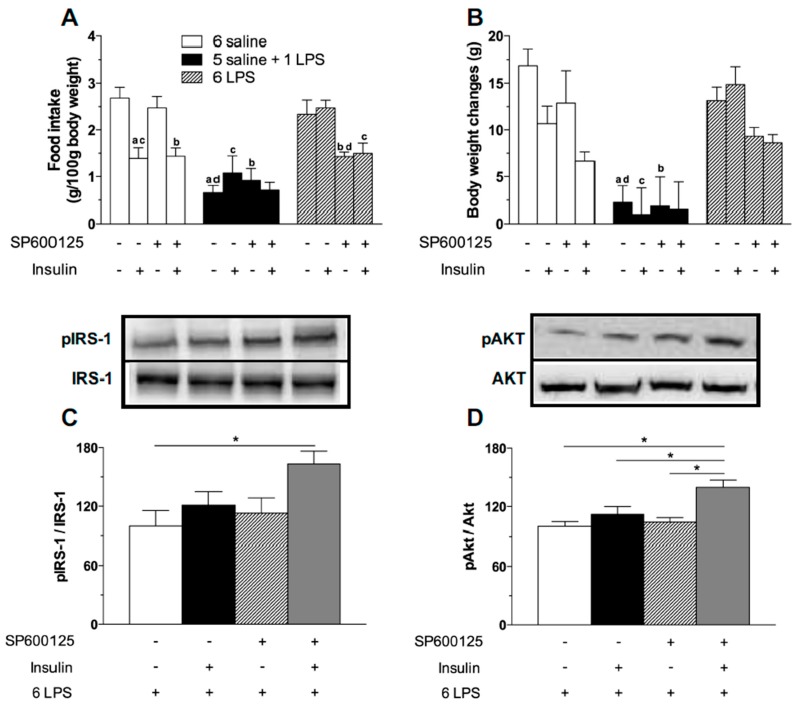Figure 6.
JNK inhibitor treatment restores the hypophagic effect of icv insulin treatment in 6 LPS-treated animals as well as restores the ability of icv insulin to phosphorylate IRS1 and AKT in 6-LPS treated rats. Effect of icv injection of vehicle (saline, 5 μL) or insulin (12 μM in 5 μL) on food intake (A) and body weight gain (B) in saline (6 saline), single (5 saline + 1 LPS, 100 ug/kg ip), or repeated LPS (6 LPS) treated-animals (6–8 animals per group) previously treated with icv injection of vehicle (saline, 5 μL) or SP600125 (20 μM in 5 μL). The representative results of three independent experiments (n = 6–8/group) are shown. Three-way ANOVA, followed by the Fisher post hoc test were performed. Data are expressed as means ± SE. Differences were accepted as significant at * p < 0.05. a vs. 6 saline + vehicle + saline, b vs. 6 saline + SP600125 + saline, c vs. 6 LPS + vehicle + Insulin, d vs. 6 LPS + vehicle + saline and e vs. 1 LPS + vehicle + Insulin. Graphs (C,D) show the percentage of pIRS-1 and pAKT expression, respectively, in the mediobasal hypothalamus of repeated LPS (6 LPS) treated-animals that received an icv injection of vehicle (saline, 5 μL) or insulin (12 μM in 5 μL) and were previously treated with an icv injection of vehicle (saline, 5 μL) or SP600125 (20 μM in 5 μL). The representative results of two independent experiments (n = 6–8/group) are shown with the measurements performed with samples from the same animal. One-way ANOVA, followed by the Fisher post hoc test were performed. Data are expressed as means ± SE. Differences were accepted as significant at * p < 0.05.

